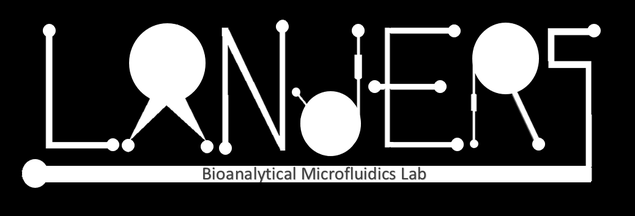Acousto-Optic Tunable Fiber
Laser-induced fluorescence (LIF) is the most common form of detection on microchips. Typically, a confocal setup is used, where incoming laser light is focused into a microchannel through an objective, and the fluorescence emission is collected and sent to a photomultiplier tube (PMT) for detection. Increasing the number of fluorophores to be detected in the sample creates a need for separating out different emission lines. We are using an acousto-optic tunable filter (AOTF) to select these emission lines. The AOTF acts as an electronically tunable spectral bandpass filter. It is made up of a single optically-active crystal bonded to a piezoelectric. By applying different radio frequencies to the piezoelectric, acoustic waves are propagated through the crystal, and a single wavelength of light can be separated from a multi-color source. This allows for a separation of multiple species spectrally, even without temporal resolution. We plan on using this device to perform multicolor detection of tagged DNA bases for clinical and forensic applications.
|
Contact Landers Research Group
jpl5e@virginia.edu (434) 243-8658 375, 379, 395 Chemistry Building McCormick Road Charlottesville, Va 22904 |

